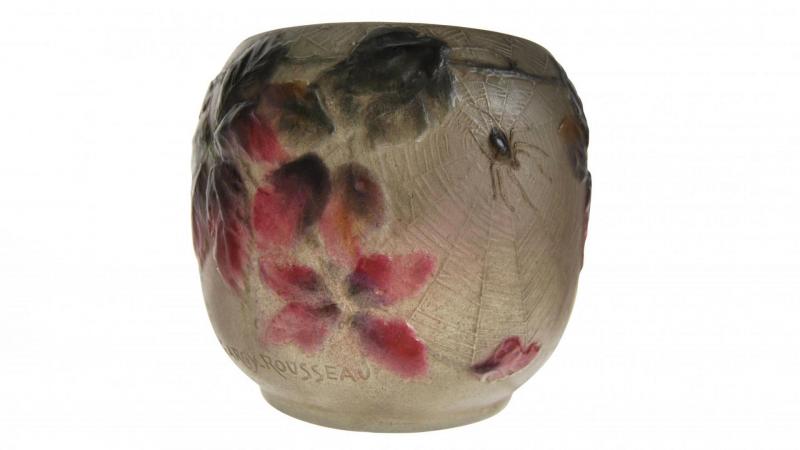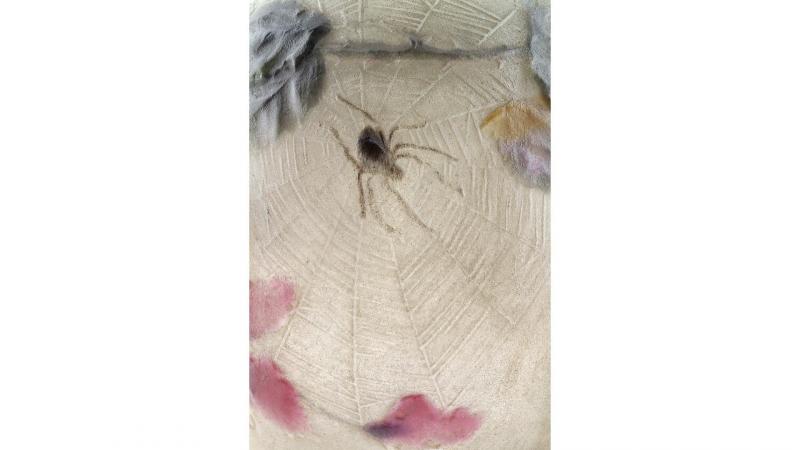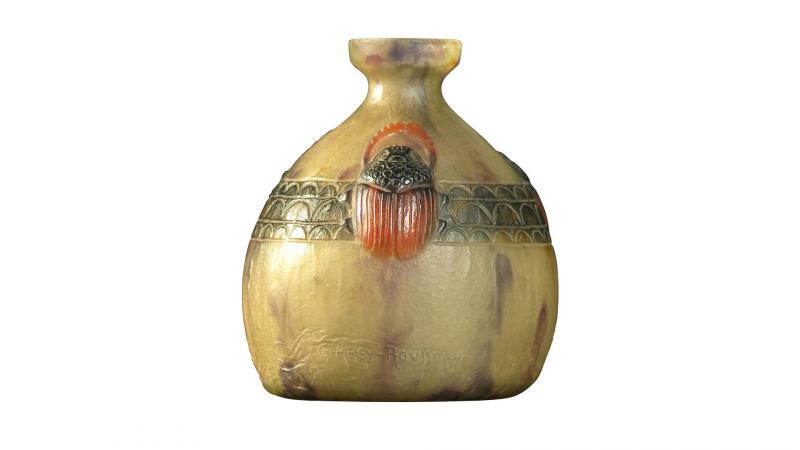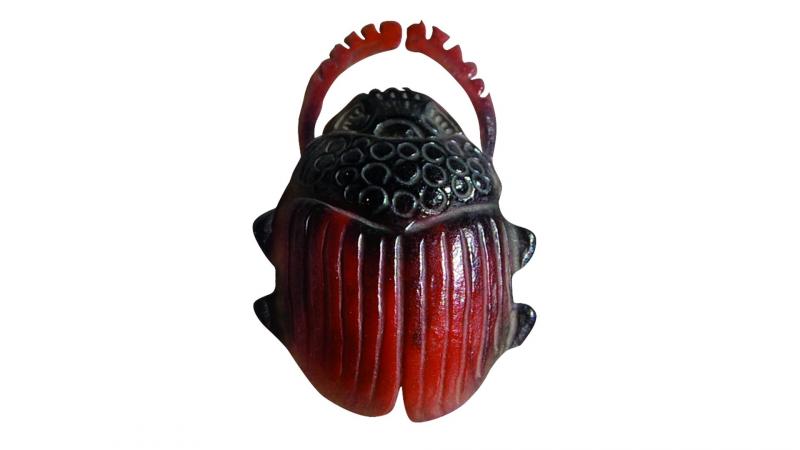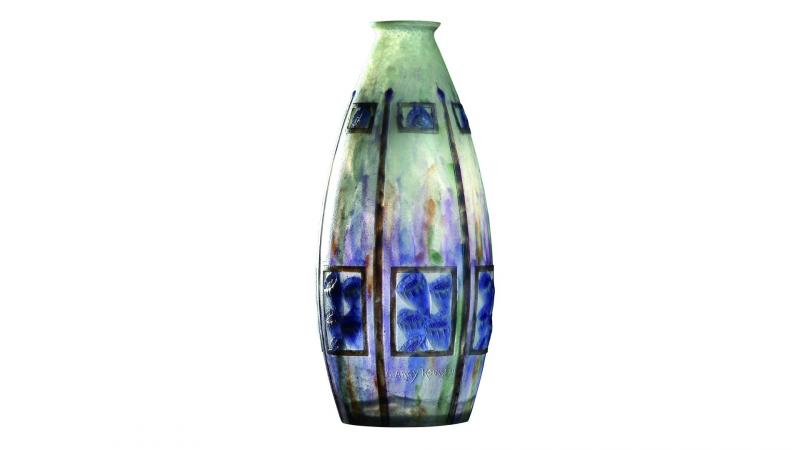This small rectangular piece of coloured glass was probably made in Egypt under Roman rule, in a glass workshop in the city of Alexandria. It perfectly illustrates the creativity and expertise of glass-makers in ancient times, more specifically, the mosaic glass technique, which had already been perfectly mastered on a small glass surface. Several coloured glass rods, which are assembled to form a design, are melted into a single rod or stick, thus reproducing the pattern along its entire length. Plates with the same design are obtained by slicing the stick into slices, thus marking the beginning of a series of glass productions. This half-face, which is juxtaposed against a second upside-down plaque, thus formed a complete face.
This theatre mask depicts a courtesan wearing a mitre-shaped piece of cloth and hair styled in corkscrew curls; this is identical to the hairstyles of the deities Dionysus and Isis. Many plates have been found, some of which form a complete pattern, illustrating several characters from comic or dramatic plays. These plates probably served as decorations for inlays in small pieces of furniture.
This technique, which was used to craft a cane inlaid with multi-coloured patterns, has also been used to decorate many cups and antique beads with floral motifs; this type of decoration was arbitrarily referred to as "millefiori" ("thousand flowers") at the end of the 15th century in Venice.
